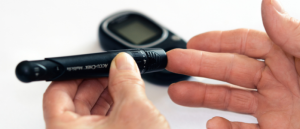Hate needles? Imagine swallowing your vaccines instead!

An orally administered pill has been developed that can attach itself to stomach lining, where it injects an mRNA vaccine using a tiny, freeze-dried needle.
I’m sure I’m not alone in saying that I don’t particularly like the experience of getting injections. I wouldn’t miss the adrenaline of waiting to get jabbed or the weirdly stiff sensation in my arm afterwards, so simply swallowing a capsule would be idyllic.
Interestingly, researchers from MIT (MA, USA) have developed a capsule that can inject 50 micrograms of an mRNA vaccine into the stomach lining. Other than appeasing those with a fear of needles, this method could be used for some gastrointestinal disorders that are difficult to treat using injections under the skin, such as stomach ulcers.
In 2019, two research groups from MIT led by Giovanni Traverso and Robert Langer collaborated to develop a blueberry sized pill that can attach itself and inject insulin into the stomach lining. The tip of this needle is made almost entirely of freeze-dried insulin, with a shaft made from a biodegradable material that is not injected into stomach lining.
Using a similar concept, the research groups developed a novel capsule that can deliver larger molecules, including nucleic acids. Traverso explains that “nucleic acids, in particular RNA, can be extremely sensitive to degradation particularly in the digestive tract. Overcoming this challenge opens up multiple approaches to therapy, including potential vaccination through the oral route.”
 Nanocarriers could enhance longevity of type 1 diabetes treatment
Nanocarriers could enhance longevity of type 1 diabetes treatment
Researchers change the biochemical pathway of immunosuppressants using nanocarriers, which could make pancreatic islet transplantation more effective.
The new polymeric capsule is made using hybrid poly(β-amino esters) nanoparticles, which acts as the needed protective casing for the freeze-dried mRNA complexes.
To test this new capsule-vaccine, first mRNA that codes for a reporter protein was injected into the stomach of mice to allow the researchers to observe which tissues uptake RNA with a normal injection and produce the respective protein. They found the reporter protein in the liver and stomach, suggesting other organs had absorbed the mRNA as well.
The new pill was then tested on pigs, who were given three capsules, each containing 50 micrograms of mRNA coding for the same reporter protein. This means 150 micrograms of mRNA was delivered to the stomach lining in total – more than the current COVID-19 vaccines that deliver around 30-100 micrograms.
The reporter protein was only found in the stomach and was not produced elsewhere in the body. The researchers are hoping to change the composition of these nanoparticles or increase the dosage to ensure RNA uptake in different organs; however, this method could be used to target gastrointestinal diseases. “When you have systematic delivery through intravenous injection or subcutaneous injection, it’s not very easy to target the stomach,” explains Alex Abramson, the first author of the study. “We see this [delivery method] as a potential way to treat different diseases that are present in the gastrointestinal tract.”
It may still be possible to induce an immune response with targeted delivery to the stomach lining, as Abramson explains that “there are many immune cells in the gastrointestinal tract, and stimulating the immune system of the gastrointestinal tract is a known way of creating an immune response.”
This pill remains to be tested using therapeutic nucleic acids, and not just mRNA coding for a reporter protein, but does have the potential to be used for mRNA and DNA vaccines.